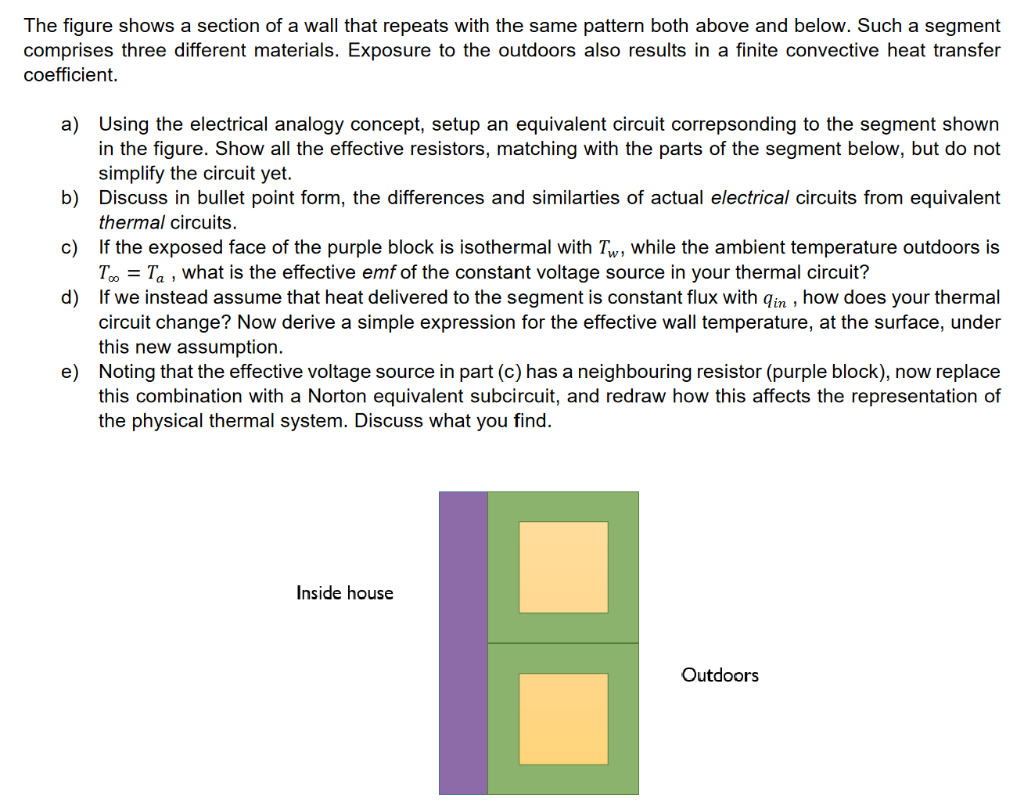Could you please solve all parts. Also, this question is related to heat transfer (chemical engineering).

The figure shows a section of a wall that repeats with the same pattern both above and below. Such a segment comprises three different materials. Exposure to the outdoors also results in a finite convective heat transfer coefficient. a) Using the electrical analogy concept, setup an equivalent circuit correpsonding to the segment shown in the figure. Show all the effective resistors, matching with the parts of the segment below, but do not simplify the circuit yet. b) Discuss in bullet point form, the differences and similarties of actual electrical circuits from equivalent thermal circuits. c) If the exposed face of the purple block is isothermal with Tw, while the ambient temperature outdoors is To = Ta , what is the effective emf of the constant voltage source in your thermal circuit? d) If we instead assume that heat delivered to the segment is constant flux with qin , how does your thermal circuit change? Now derive a simple expression for the effective wall temperature, at the surface, under this new assumption. e) Noting that the effective voltage source in part (C) has a neighbouring resistor (purple block), now replace this combination with a Norton equivalent subcircuit, and redraw how this affects the representation of the physical thermal system. Discuss what you find. Inside house Outdoors The figure shows a section of a wall that repeats with the same pattern both above and below. Such a segment comprises three different materials. Exposure to the outdoors also results in a finite convective heat transfer coefficient. a) Using the electrical analogy concept, setup an equivalent circuit correpsonding to the segment shown in the figure. Show all the effective resistors, matching with the parts of the segment below, but do not simplify the circuit yet. b) Discuss in bullet point form, the differences and similarties of actual electrical circuits from equivalent thermal circuits. c) If the exposed face of the purple block is isothermal with Tw, while the ambient temperature outdoors is To = Ta , what is the effective emf of the constant voltage source in your thermal circuit? d) If we instead assume that heat delivered to the segment is constant flux with qin , how does your thermal circuit change? Now derive a simple expression for the effective wall temperature, at the surface, under this new assumption. e) Noting that the effective voltage source in part (C) has a neighbouring resistor (purple block), now replace this combination with a Norton equivalent subcircuit, and redraw how this affects the representation of the physical thermal system. Discuss what you find. Inside house Outdoors







